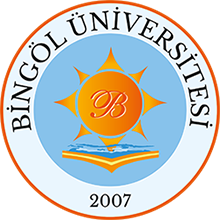FIKIH USÛLÜ-CEDEL İLİŞKİSİ
Abstract
ÖZET
Fıkıh usulü, meseleci (kazuistik) bir özelliğe sahip olan fıkıh ilmini, küllî ve
mücerret/soyut kâidelerle ifade edip, onu normatif bir bilim dalı haline getirerek
tenkit ve münâzara yöntemini de öğretmiştir. Bu tenkitçi bakış açısı her şeyden önce
fıkıh usulünün tedvinini etkilemiştir. Bu bağlamda tümdengelim (dedüksüyon),
tümevarım (istikra-endüksüyon) ve bu iki yöntemin mezc edilmesinden oluşan
metodlarla birçok eser kaleme alınmıştır.
Değişik sonuçları doğuran farklı usûlî metodların kullanılması neticesinde,
usûlde “cedel olgusu” ortaya çıkmıştır. Cedel ilmi, farklı açılardan olaylara bakma
perspektifini kazandırmakta ve farklı ihtimalleri ortaya atma özelliğini
bahşetmektedir. Bu da yapılan hataları görüp tashih etme ve farklı fikirler arasında
tercihte bulunup en doğru sonuca ulaşma yeteneğini vermektedir. Bu şekilde varılan
sonuçlar, usûlün de nihaî hedefi olan nâzır/müctehid-cedelciyi tatmin ettiği gibi
münâzır/cedeldeki muhatabı da ikna ve/veya ilzam etmektedir. Böylece fıkıh usulü
ve cedel disiplinleri arasında nazarî ve amelî boyutta münasebet oluşmaktadır. Bu
münasebetin nazarî boyutu kavramsal, temellendirme ve diyalektik üslûp ekseninde
şekillenmektedir.
Söz konusu münasebetin amelî boyutu ise asıl ve ma‘kûlu’l-asıl etrafında
öbeklenen deliller ile istidlâl ve tercih çerçevesinde belirlenmektedir. Fıkıh usulü,
söz konusu delillerin her birini ortaya koyup istidlâl sırasındaki hiyerarşiyi
gösterirken cedel, aynı delillerin hüccet oluşuna ve o delilleri işleme sokma
biçimlerine yöneltilen itirazları ele almakta ve bu itirazları bertaraf etme yöntemini
göstemektedir. Cedelin anılan işlevi fıkıh usulünün iki sac ağından birini
oluşturmaktadır. ABSTRACT
The fiqh method, which originated in Shar'i provisions and also deals with the
Shari'i proofs, had to be confined to investigating and recording the sources that
informed the courts before the request. However, with the understanding and
interpretation of the nass, the fiqh way became a radical and systematic way of
thinking. With this identity that the fiqh way has gained, the resources, principles and
boundaries of the İstinbat (To reveal a secret word from a word or a work) have been
determined and functioned as scientific discipline in a way that is appropriate for the
target and true.
The fiqh scholarship, which has a Kazuistic (questioner) characteristic, has
gained a normative scientific discipline by expressing basic and nominative
principles by means of fıkıh method. While performing his real function with this
characteristic, he has pioneered the method of criticism and debate. Due to its critical
nature, it requires the provision of fiqh methodology. Accordingly, the deduction or
the induction method and with a combination of these two methods, alot of work has
been brought out. using different procedural methods, as a result of different
outcomes, the necessity of the dialectics has been compulsory. Cedel offers the
opportunity to gain a different perspective on events and to gain a different
perspective. Satisfying and persuading pros and cons, in fact, the reletion between
the fiqh way and the Cedel has been in a way like the relationship between the
theoretical and the working dimension. The fiqh way reveals each of the evidences
emerging in this frame and reveals the hierarchical order while providing İstidlal (
proofs ). On the contrary, Jedel gives the necessary responses by addressing the
objections directed to the ways in which these evidence are formulated and
processed. This function, which Jedel had realized, existed in the essence of the fiqh
methodology and constitutes one of its two supporting legs.
Collections
- Temel İslam Bilimleri [157]

DSpace@BİNGÖL by Bingöl University Institutional Repository is licensed under a Creative Commons Attribution-NonCommercial-NoDerivs 4.0 Unported License..













